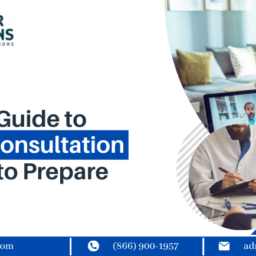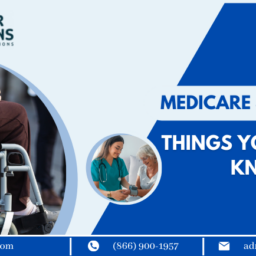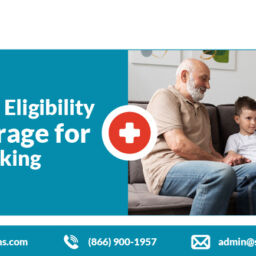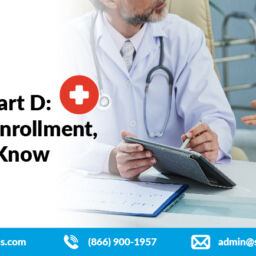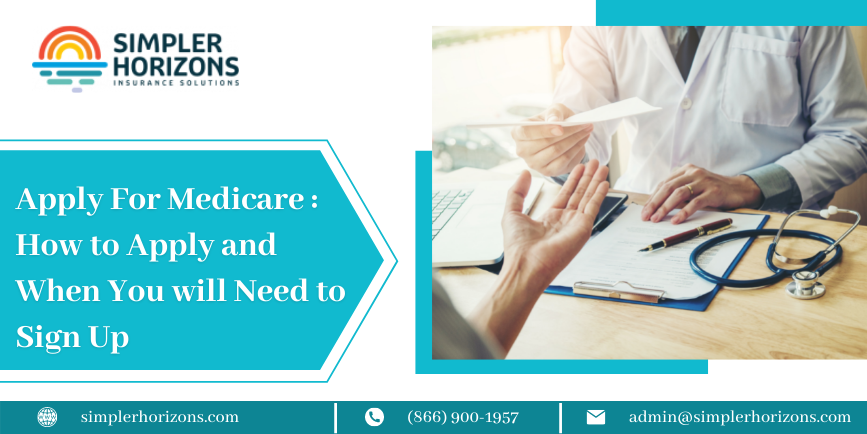
Are you turning 65 this year? Congratulations! You are now eligible for Medicare. But do you need to apply for it, or will you be enrolled automatically? How exactly should you apply for Medicare?
These are some questions that anyone — turning 65 in the next few months or has already turned 65 — can have in mind.
And there are numerous ways to apply for it, which we will discuss below, depending upon your preferences. But first, let’s dive into a quick summary of Medicare.
What is Medicare?
Medicare is a health insurance program that the federal government offers to people who’re 65 and older. However, you can get Medicare before the age of 65 if you have a specific disability, permanent renal failure, or amyotrophic lateral sclerosis (ALS, or Lou Gehrig’s disease).
Medicare Eligibility Factors
If you’re currently getting Social Security benefits and are under the age of 65, you will automatically be enrolled in Medicare Part A and B when you turn 65 years old. If you do not want to take Medicare Part B, you can postpone it at any time.
If you’re not currently receiving Social Security, you will have to be actively enrolled in Medicare.
Once you know what to do and what not to sign up for, the actual process becomes more accessible. The following factors are essential to consider when enrolling in Medicare.
Your Age
You can sign up for Medicare three months before the time you turn 65, and three months after your 65th birthday. The earlier you sign, the sooner the coverage begins.
It is advised that you shall sign up three months before your 65th birthday, as your coverage will begin right after you turn 65.
It is essential to note that your medical coverage will also be delayed if you delay in sign up by the last three months of the IEP (Initial Enrollment Period).
If You are Disabled
Suppose you’ve been receiving Railroad Retirement Board Disability Benefits or Social Security Disability Benefits for at least twenty-four consecutive months. In that case, you are eligible for enrollment in Medicare at any time, regardless of your total age.
If you’ve amyotrophic lateral sclerosis or end-stage renal disease (ESRD), you are eligible for Medicare at any time, independent of your age.
Your Citizenship
If you want to be eligible for Medicare, you must either be a US citizen or a permanent US resident who has been living here legally for at least five consecutive years.
If You Have a Spouse
Unlike private health insurance plans, your spouse may not be covered under your Medicare plan.
To cover your spouse, they must meet specific Medicare eligibility requirements. Once such requirements are met, they may be eligible for some Medicare benefits based on your work history, even if they have not worked.
If your spouse is younger than you and dies before you, you’ll lose your health insurance too on Medicare. In that case, you can purchase health coverage through a private provider.
If you’re approaching the age of 65 but wish to continue the health insurance coverage you currently have through your spouse’s plan, you can usually do so without penalty.
Can I Enroll in Medicare Plans Online
It is generally easy and quick to enroll in Medicare coverage options online. According to a study, various people are signing up online. During 2018, approximately 16% of those included in the study enrolled online in Medicare coverage options. It was just over 10% in 2017.
It is interesting to note that online enrollment was even higher (22% for 2018) during “Q4,” where Q4 means the fourth quarter of the year. Then there is a Medicare Fall open enrollment for Medicare Advantage and Medicare Prescription Drug Plan. Fall open enrollment takes place every year from October 15 to December 7.
What Benefits Other Parts of Plan Cover
Medicare Part A covers hospital stay, while Part B includes physician fees. Medicare Part C, called Medicare Advantage, provides options for additional coverage that may include vision, dental care, and wellness care. Medicare Advantage plans cover at a minimum all that Medicare Part A and Part B cover. You can apply for this only if you are already enrolled in Part A, and Part B. Medicare Part D includes prescription medications.
At age 65, you must have signed up for Part A, but not Part B. This often happens to someone who is still working and has access to a group health plan. Once you retire, you must add Part B within eight months of your employment termination or at the end of your group/employer health coverage. This nomination option falls under one of the special nomination period offers.
How to Enroll in Medicare
Before you begin the process of enrollment in Medicare parts A and B, you can consider what type of Medicare coverage you ultimately need. The following steps will help you:
- Check if you were automatically enrolled in Part A or Part B of Original Medicare.
- Decide whether you want Part B or whether you want to defer the enrollment.
- You need to review Medicare Advantage plans in your area to see if those coverage options and costs work better for you than basic Medicare.
- If you decide to go for original Medicare, consider your Part D options and whether the Medigap plan will be helpful to you.
The SSA has a checklist for Medicare applications that can be helpful. It lists the types of forms you will need for the process, including tax forms, proof of military service, and W-2s. Once you have all the data you need to apply, you can start signing up.
Call us to assist you with navigating this site or for questions regarding any specific plans. SCHEDULE A VIRTUAL MEETING


